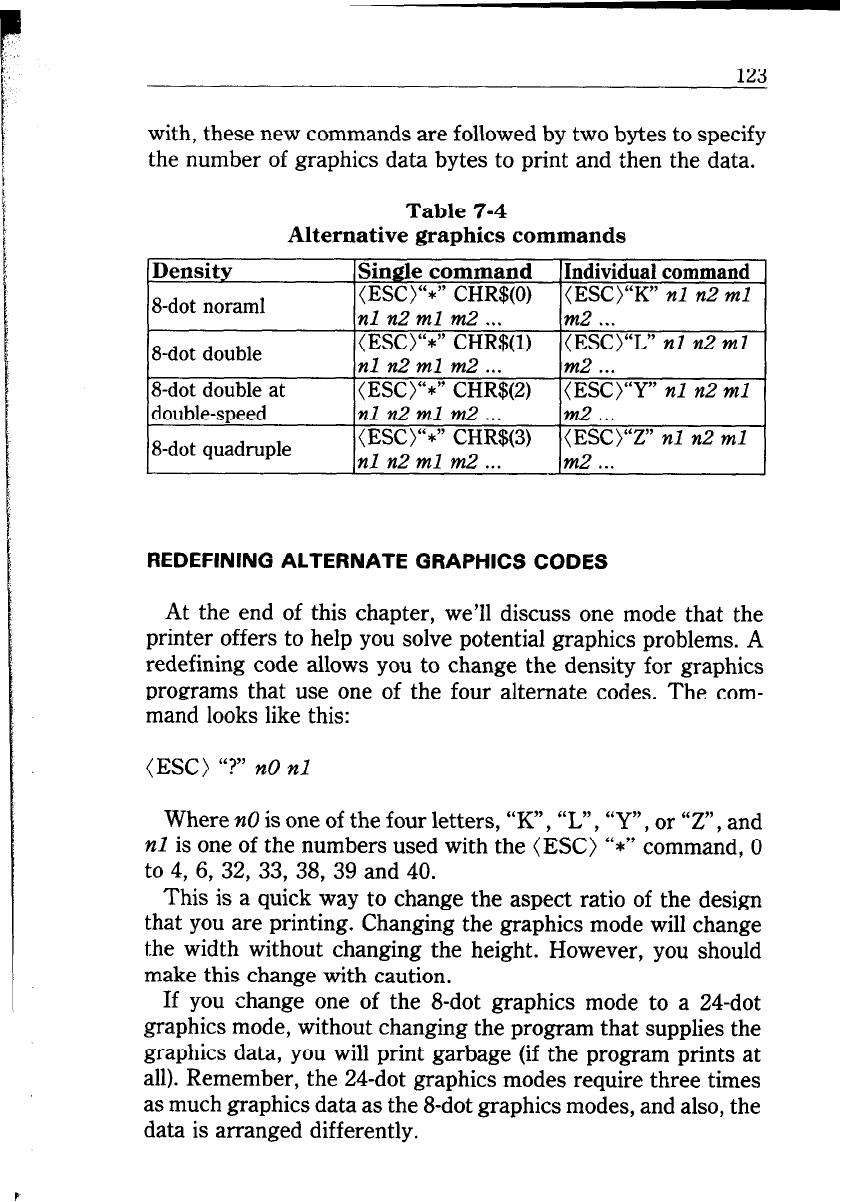
123
with, these new commands are followed by two bytes to specify
the number of graphics data bytes to print and then the data.
Table 7-4
Alternative graphics commands
Density Single command
Individual command
&dot noraml
(ESC)“*” CHR$(O)
(ESC)“K” nl n2 ml
nl n2 ml m2 . . .
m2 . . .
&dot double
(ES(Z)“*” CHR$(l)
(ESC)“L” nl n2 ml
721 n2 ml m2 . . .
m2 . . .
a-dot double at (ESC)“*” CHR$(B)
(ESC)“Y” nl n2 ml
double-speed nl n2 ml m2 . . .
m2 . . .
g-dot quadruple
(ES(Z)“*” CHR$(3)
(ESC)“Z” nl n2 ml
nl n2 ml m2 . . .
m2 . . .
At the end of this chapter, we’ll discuss one mode that the
printer offers to help you solve potential graphics problems. A
redefining code allows you to change the density for graphics
programs that use one of the four alternate codes. The com-
mand looks like this:
(ESC) ‘?” n0 nl
Where n0 is one of the four letters, “K”, “L”, “Y”, or “Z”, and
nl is one of the numbers used with the (ESC) “*” command, 0
to 4, 6, 32, 33, 38, 39 and 40.
This is a quick way to change the aspect ratio of the design
that you are printing. Changing the graphics mode will change
the width without changing the height. However, you should
make this change with caution.
If you change one of the 8-dot graphics mode to a 24-dot
graphics mode, without changing the program that supplies the
graphics data, you will print garbage (if the program prints at
all). Remember, the 24-dot graphics modes require three times
as much graphics data as the 8-dot graphics modes, and also, the
data is arranged differently.


















